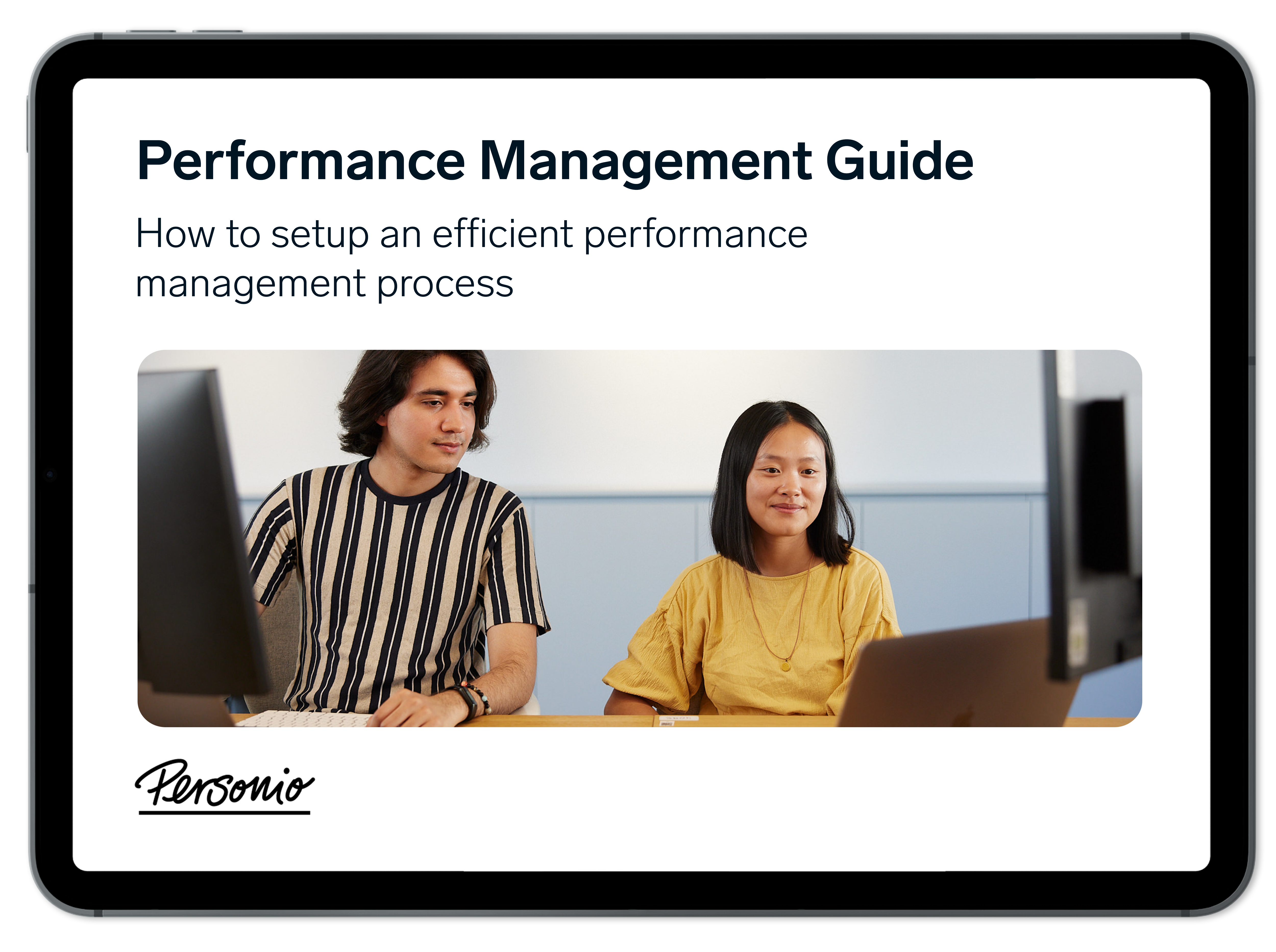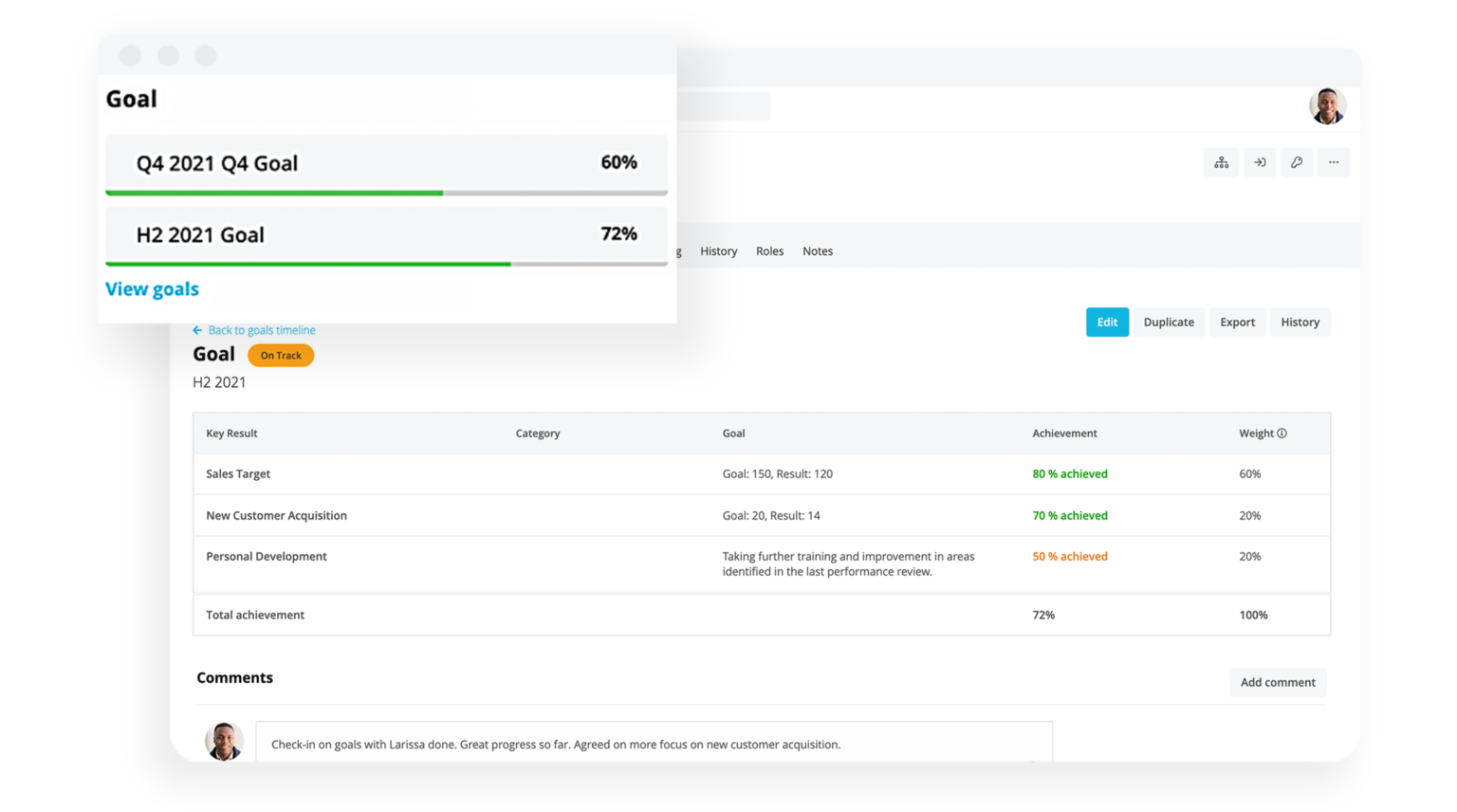Employee Retention: Strategies To Help Employees Stick Around

High-performing businesses often rely on employee retention to maintain performance. That's because, in the case of staff retention, talent is the basis of your business’ success — so keeping it around, while cultivating it, is imperative.
But, what do organizations need to know about retention? Or, how do you go about formulating a proper retention strategy? In this article, we will introduce you to three crucial strategies that can help boost retention with a solid plan.
Contents
- 1What Is Employee Retention?
- 2When Do You Need Employee Retention Strategies?
- 3How Do You Maintain Employee Retention?
- 4Employee Retention Strategies: How To Boost Your Retention Rate
- 5Employee Retention Strategy 1: A Culture of Feedback
- 6Employee Retention Strategy 2: Selective & Tailored Retention
- 7Employee Retention Strategy 3: Vision-Based Employee Development
- 8The Top Employee Retention Strategy: Performance Management
What Is Employee Retention?
Employee retention is the strategy or plans your organization develops to maintain a high level of staff retention: keeping your employees employed for longer. Expressed as a data point, this means a boost in your employee retention rate, and a decrease in your staff turnover rate.
What Is Staff Retention?
Both employee retention and staff retention are used interchangeably. The main thing is that staff retention is often in reference to the entire population of an organization. But, as we’ll discuss further on, focusing more on the ’employee’ is typically the key to unlocking a higher retention rate.
What Drives Employee Retention?
If staff retention is a strategy, what encompasses it? We can think of the main drivers of employee retention as:
Workplace Flexibility – Creating a flexible work environment to help people do their best work.
Work-life Flexibility – Offering benefits so that your employees are personally and professionally fulfilled.
Career Flexibility – Training and development opportunities to help your employees grow in their work.
Personalized Experiences – Making employees feel like they are being heard and catered to in the company.
Each of these things helps drive staff retention in an organization. And, it is the responsibility of the HR department to help craft the practices, initiatives, and policies, that help realize each of these drivers to keep employees around for longer.
People management skills can drive retention even higher. Here are the 10 you need to know.
Why Do Employee Retention Strategies Matter?
Simply put, the less time you spend on re-filling positions, the more you can spend on developing new hiring plans, developing your talent, and scaling teams. When you don’t have to worry about your staff leaving, because they are satisfied and performing, your overall business benefits.
When Do You Need Employee Retention Strategies?
One of HR’s most important tasks is to identify those candidates whose profiles line up as seamlessly as possible with the corporate profile. This allows them to identify candidates with a higher likelihood of long-term retention right from the very beginning, rather than guessing and hoping for the best.
For example, applicants who appear to be highly talented but have unrealistic expectations will prove difficult for retention. Once it has been determined that an applicant’s qualifications will benefit the company, it is critical to consider whether or not that applicant will be able to find personal fulfillment and satisfaction within their role.
Best Practice: Compare applicants’ expectations with your company’s Employer Value Proposition. This will allow you, even during the application process, to assess whether or not an applicant is likely to make a long-term commitment to the company.
How Do You Maintain Employee Retention?
It boils down to one simple, yet elusive, concept: Employee satisfaction. Sociologists Timothy Butler and James Waldrop have identified three key factors that determine employee satisfaction…
1. Skills
In order to gain a sense of satisfaction from their work, employees must possess the skills and abilities necessary to carry out their tasks. That’s because feelings of incompetence quickly lead to thoughts of job changes.
2. Values
The company’s value and reward systems must be consistent with employees’ expectations and must also be perceived as being fair. Monetary incentives, the creation of a positive working environment, or recognition and promotion are three fundamentally different models for rewarding employees – and there is even potential conflict between them.
Did you know that performance management cycles can help you hold onto your top talent? Ensure that every element of your performance process is effective for your employees, and click here for our full guide.
In addition, professional development can serve as a key strategy to not only ensure that employees are satisfied in their roles, but that they get better at what they do. For the full guide to professional development, click here to learn more.
3. Interests
Since our personal interests are so firmly rooted in our personalities, daily tasks, too, should overlap with personal interests, creating a natural ‘fun factor’ in the workplace.
Surveys have shown that salary considerations are a surprisingly low motivating factor for employees to change employers, meaning that soft factors, collectively termed ‘satisfaction’, are dramatically more important.
If the factors mentioned above can be provided, this will help establish a solid basis for employee loyalty. This can then be even further enhanced by targeted measures.
Source the best talent around

Design career pages, create job ads and publish them on more than 600 portals with just one click. Say hello to seamless recruitment with Personio.
Find the Talent You NeedEmployee Retention Strategies: How To Boost Your Retention Rate
When it comes to formulating an employee retention plan or figuring out ways to boost your retention rate, we need to think about in terms of employee accommodations. Every time we, as an HR department, try to personalize the employee experience, that becomes an employee retention measure we are using.
It can begin with things like flexible work models, such as working from home, part-time work, or the option of a sabbatical year. Many companies also provide their employees with office amenities such as water, fruit, and coffee.
Employers can score points with their employees here as well if they offer a large selection of quality products (especially when it comes to coffee). In addition, companies are also offering activities such as team events and company sports, or special employee rates for a gym membership, travel allowances, and other small financial incentives.
Best Practice: The more individualized these measures are to the interests of employees, the stronger all employees will sense that they are appreciated.
Employee Retention Strategy Examples
Employee Training/Development:
Promotions
Fixed training budgets for employees
Training programs
Regular feedback from management
Assigning responsibility for projects/teams
Work-Life Balance:
Flexible working hours
Part-time work
Work from home
Sabbaticals
Assistance with child care
Christmas/holiday bonus
Travel allowance as a non-taxable, non-cash benefit
Working Environment:
Transparency, communication, respect, appreciation
Team events
Modern, fully-equipped offices where employees are able to work efficiently
Employee surveys
A spirit of cooperation
A culture of constructive feedback
Complimentary snacks, such as fruit, coffee, or cereal
Employee discount for lunches, e.g. at the company cafeteria
Employee Retention Strategy 1: A Culture of Feedback
One frequently underestimated employee retention strategy is the creation of a vibrant feedback culture. That’s because, once a key performer has, unbeknownst to management, already decided to leave, it is usually too late for the company to turn things around.
For this, we can look to a company like Zalando for an example of how measures like employee surveys and exit interviews play an essential role in retention strategies.
By regularly soliciting employee feedback, companies can take action to counteract brewing problems early on, while at the same time displaying an appreciative interest in the well-being of their employees, which, in turn, has a positive impact on employee satisfaction and loyalty.
Interviews with employees who are considering leaving the company are also valuable – they can offer insight into problems within the company and provide information about enticements being offered by competitors.
A casual conversation over lunch is much more relaxed than an official feedback session. Ask your employees to share their feelings about how things are going.
Consider questions like:
Are they satisfied with their responsibilities and the working environment?
Are there changes they would like to see made?
What tasks could they imagine taking on in the future?
In which direction do they want their careers to develop?
Employee Retention Strategy 2: Selective & Tailored Retention
Boosting your employee retention rate costs money. So, it is a good idea to have a number of foundational strategies for showing employee appreciation.
That said, companies should also consider which specific employees are deserving of even greater investment.
Top performers with long years of service, rising talent, or key executives are – in purely economic terms – ‘more valuable’ than minimally qualified, relatively unmotivated employees.
The MTU Aero Engines GmbH company provides a clear example of just what selective employee retention measures might look like. They created a profile for a ‘bottleneck employees,’ and have subsequently developed individually-tailored programs to promote talented junior staff members while working to ensure long-term loyalty.
Employee Retention Strategy 3: Vision-Based Employee Development
The example above shows that companies that explicitly wish to retain specific employees are going to have to ask themselves a variety of questions. For example:
Which employees are contributing most to the company’s success?
Of them, which employees are going to play an important role in the future?
Where do bottlenecks in the company exist?
Building loyalty only in current high performers, however, doesn’t extend far enough. Employee retention also falls within the domain of strategic corporate development, meaning that companies must consider this part of their corporate vision.
Do Employee Retention Strategies Help Employee Motivation?
It’s reductive to view employee retention only in terms of increasing your employee retention rate. Employees who, in a positive way, feel bound to their companies, almost always display a higher degree of motivation than those who are prepared to change employers.
Employee retention strategies can therefore also be considered a basis for employee engagement. They not only prevent wear-and-tear on the staff – but lays the groundwork for growth and success that would otherwise not be possible.
Is Employee Retention Related To Employee Loyalty?
If companies want to keep their employees from moving to more attractive employers – or to nip any such idea in the bud – they are going to need to invest money and effort into building employee loyalty. This all begins by formulating employee retention strategies that work.
Employee Loyalty: Beneficial For Employer Branding
Investing in your employee retention rate pays off in a number of ways. It helps companies to retain and motivate valuable employees, while at the same time enhancing the employer brand. This makes retention management an essential component of any employer branding strategy.
Satisfied employees who feel a deep commitment to the company and are well-integrated within the company network are far more likely to act as positive multipliers. This means they automatically attract, from within their own networks, new talent. These employees represent both valuable long-term resources and effective public testimonials to your company.
What Are Other Companies Doing?
Fonepit AG: Within the Berlin “AndroidPit” community, group lunches, parties, and sports activities are a part of their weekly routine. In addition, employees who meet or even exceed their targets receive incentives, including vouchers for such things as free lunches or even vacations.
Travelbird: This online travel deal agency has more than tripled in growth in a very short period of time, making employee training and career opportunities major topics! There, in addition to providing employees with a company restaurant and offering regular massages, an in-house academy provides training for employees – whether in leadership skills, sales, technology, or creation. The aim is to have every employee placed in their optimal position within the company.
Personio: At Personio, it’s not just our growth that is rapid – so are our commutes. At the time of hire, each employee is given an environmentally-friendly Unu scooter – or, alternatively, an allowance for public transportation. And, to ensure that our growth curve will continue to rise, each employee is given a training budget of €1,500 per year.
The Top Employee Retention Strategy: Performance Management
The best employee retention strategy is one formulated around employees and their development, otherwise known as performance management. When you help your employees learn, develop, and succeed in their roles, then you are better able to keep them around for years and years. Start by implementing a performance management software today.

